Transport, Health and Urban Systems Research Lab
The aim of the Transport, Health and Urban Systems Research Lab (THUS) is to explore the effects of physical and social systems on the health of populations.
The design of towns, cities, neighbourhoods, and social systems greatly influences the social, economic, environmental, and health outcomes of populations.
At THUS, we develop and apply novel methods using big data, artificial intelligence, and advanced analytics to provide new insights thereby influencing urban policies, globally.
The THUD Research Lab comprises a cross-disciplinary research team, exploring how the effects of urban form and transportation influence the health of residents in cities.
-
Planning the driverless city: What autonomous vehicles mean for Australasian cities
Autonomous vehicles may improve road safety, reduce car ownership, and reduce the need for parking. They may also entrench car dependency, encourage sprawl and shift investment away from vital public transport systems.
-
Safer cycling in the urban road environment
The study is the first comprehensive study in Australia that combines academic, government and community efforts to enhance cycling activity while addressing safety concerns.
-
Effects of feedback and incentive-based insurance on driving behaviours
The broader funded project is the first experimental study to examine the extent to which direct-feedback and incentive-based insurance modify a driver's behaviour.
-
Low-Carbon Living Co-benefits Calculator
The aim of this project is to develop and trial a prototype low-carbon precinct co-benefits calculator for use by urban planners and designers.The calculator will estimate co-benefits associated with gains (or losses) in health, productivity, and pollution from a range of alternative precinct designs and transport/land use configurations.
-
Western Suburbs Transport Studio
What’s best for the west? Plan Melbourne 2017-2050 and alternative transport futures for Melbourne’s western suburbs.
-
Networks and Space: Autonomous Vehicles in Suburban Melbourne
Assessing the spatial implications of Autonomous Vehicles as feeders to railway stations in suburban Melbourne
These web tools have been designed to allow users to explore, visualise, and understand the applications of THUD research.
-
Estimating the Health Benefits of Compact Cities
A Healthy Cities Scenario Planner
-
Explore the role of cycling infrastructure on car vs bicycle crashes
Explore where and when every recorded car vs cyclist crash has occurred in Victoria between 2010 and June 2017
-
Low Carbon Living Co-benefits Calculator
A prototype for low-carbon precinct design
-
AwaP-IC – An Open-source GIS Tool for Measuring Walkable Access
AwaP-IC is a QGIS tool that calculates the Area-weighted average Perimeter (AwaP) and Interface Catchment (IC), which combined, capture the capacities of urban morphologies to enable and attract pedestrian movement
For policy makers, urban designers/planners, and transport planners who shape our rapidly expanding cities, minimising exposure to health risks while maintaining or enhancing the mobility and accessibility of city residents needs to be a priority. The structure of a city and especially the local neighbourhood greatly influence a resident’s experiences and opportunities, which in turn impacts their health and wellbeing, and ultimately the social, economic and environmental impact of the city.
Research themes
The Lab focuses on two broad research themes:
New Urban Access and Mobility
New urban access and mobility encompasses elements associated with innovation in the planning and delivery of public transport, innovations associated with safe, inclusive and sustainable transport as well as exploring the institutional and governance requirements to achieve a reformed agenda at the local, state and federal-levels. This will identify approaches (including policy, planning and governance) that will lead to healthier and more sustainable urban environments. Specifically, the theme’s objectives include:
- innovation in planning and delivery of public transport both at the local and cross-city levels
- accessibility and land-uses that are conducive to health and wellbeing
- innovation in safe and sustainable transport
- identifying and seeking solutions to institutional and political barriers to healthy and sustainable urban mobility in Australian cities
Urban Design, Walkability and Health
Public health challenges such as premature deaths due to excess weight and obesity have been shown to be associated with city-design and levels of physical activity of its residents. Promoting an active community with high levels of wellbeing requires radically different strategic approaches to urban transformation, necessitating innovative urban design; urban design that brings together modelling and an understanding of network connectivity, urban microclimate and comfort, UV exposure and access to daylight, air quality, and a sense of place and social infrastructure alongside transport and density distribution. While the general relationship of walking to public health is well established, the specific ways in which walkability is geared to urban morphology are less understood. This theme will place a specific focus on:
- developing metrics, modelling and mapping of urban design dimensions of walkability, including density, functional mix, access and microclimate
- exploring the opportunities and barriers to transit-oriented urban designs, including property markers and urban design frameworks
- identifying and developing design innovation for walking, cycling and transit oriented urban design.
-
Prof Mark Stevenson

-
Assoc Prof Jason Thompson

-
Prof Brendan Gleeson

-
Prof Kim Dovey
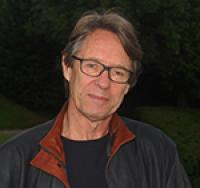
-
Prof Sun Sheng Han

-
Dr Iderlina Mateo-Babiano

-
Dr Hyung Min Kim

-
Dr Elek Pafka
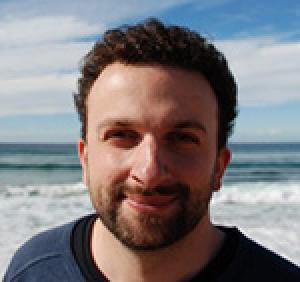
-
Assoc Prof Janet Stanley
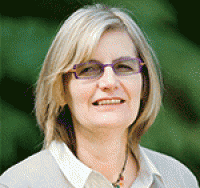
-
Dr John Stone

-
Dr Jennifer Day
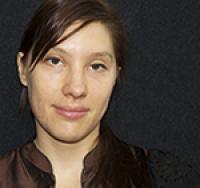
-
Dr Siqing Chen

-
Dr Kerry Nice
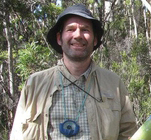
-
Mr Tony Bliss

-
Mr David Mah

-
Ms Leire Asensio-Villoria
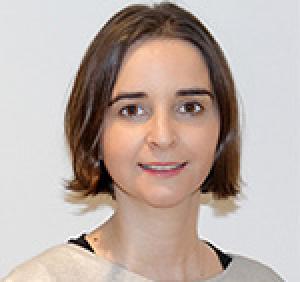
-
Dr Crystal Legacy

-
Dr Sachith Seneviratne

-
Dr Suzanne Mavoa
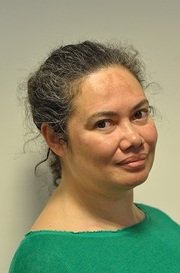
-
Dr Kathryn Davidson
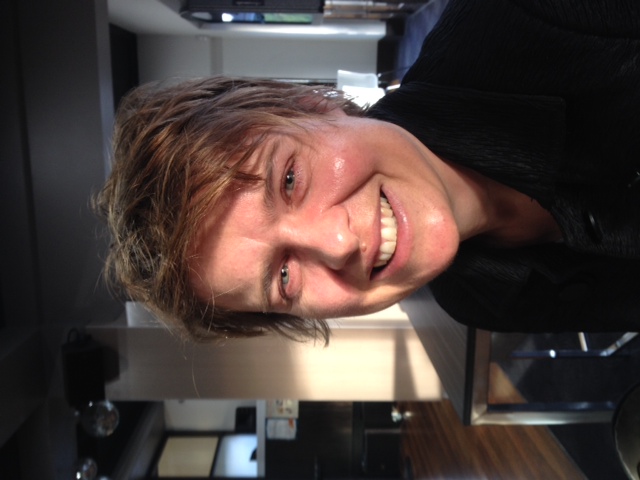
-
Dr Haifeng Zhao

-
Dr Thanh Ho

-
Dr Rajith Vidanaarachchi

Lancet Special Series
-
City planning and population health: A global challenge
Significant global health challenges are being confronted in the 21st century, prompting calls to rethink approaches to disease prevention. A key part of the solution is city planning that reduces non-communicable diseases and road trauma while also managing rapid urbanisation.
-
Land use, transport, and population health: estimating the health benefits of compact cities
Using a health impact assessment framework, we estimated the population health effects arising from alternative land-use and transport policy initiatives in six cities.
-
Use of science to guide city planning policy and practice
The primary recommendation of this paper is for cities to actively pursue compact and mixed-use urban designs that encourage a transport modal shift away from private motor vehicles towards walking, cycling, and public transport.
Open Access
-
The MJA-Lancet Countdown on health and climate change
In partnership with The Lancet and the MJA, we present the inaugural Australian Countdown assessment of progress on climate change and health.
- Publication
-
Effects of feedback and incentive-based insurance on driving behaviours
Road injury is the leading cause of death for young people, with human error a contributing factor in many crash events. This research is the first experimental study to examine the extent to which direct feedback and incentive-based insurance modifies a driver's behaviour.
-
Pedestrian Crossing Environments in an Emerging Chinese City
While pedestrian crossings play a vital role in providing seamless mobility for pedestrians, they have also continually been spaces of negotiation, contestation, and conflicts between and among different users. This research aims to assess the pedestrian crossing from an operational perspective in one emerging Chinese city, Suzhou.
-
Identifying safe intersection design through unsupervised feature extraction from satellite imagery
The World Health Organization has listed the design of safer intersections as a key intervention to reduce global road trauma. This article presents the first study to systematically analyze the design of all intersections in a large country, based on aerial imagery and deep learning.
-
Modelling SARS-CoV-2 disease progression in Australia and New Zealand: an account of an agent-based approach to support public health decision-making
We developed a public health decision-support model for mitigating the spread of SARS-CoV-2 infections in Australia and New Zealand. Having demonstrated its capacity to describe disease progression patterns during both countries’ first waves of infections, we describe its utilisation in Victoria in underpinning the State Government’s then ‘RoadMap to Reopening’.
2024
- Pettigrew, S., Booth, L., Farrar, V., Brown, J., Godic, B., Vidanaarachchi, R., ... & Thompson, J. (2024). Australians’ perceptions of the potential effects of increased access to alcohol via autonomous delivery services: A multi-method study. Addictive Behaviors, 148, 107872..
2023
- Ho, T.P., Stevenson, M., & Thompson, J. (2023). Perceived Urban Design Across Urban Typologies in Hanoi. Journal of Contemporary Urban Affairs, 7(2), 156–170.
- Silva, V., & Pafka, E. (2023). Capturing spatial inequalities: an analysis of walkable access to open spaces in Lima. Urban Research & Practice, 1-22.
- Stevenson, M., Mortimer, D., Meuleners, L., Harris, A., Senserrick, T., Thompson, J., ... & Perera, M. (2023). FEEDBACK trial-A randomised control trial to investigate the effect of personalised feedback and financial incentives on reducing the incidence of road crashes. BMC public health, 23(1), 2035.
- Ho, T. P., Stevenson, M., Thompson, J., & Nguyen, T. Q. Urban typologies in Hanoi and impacts on street-level urban design, pollution, and walking. International Seminar of Urban Form (ISUF) 2023: Praxis of Urban Morphology. Serbia. September 2023.
- Booth, L., Farrar, V., Thompson, J., Vidanaarachchi, R., Godic, B., Brown, J., ... & Pettigrew, S. (2023). Anticipated Transport Choices in a World Featuring Autonomous Transport Options. Sustainability, 15(14), 11245.
- Stevenson, M., Thompson, J., & Ho, T.P (2023). Big Data and Urban Health. In Oxford Research Encyclopedia of Global Public Health.
- Senserrick, T., Ivers, R., & Stevenson, M. (2023). Road Traffic Injuries. In International Encyclopedia of Public Health. Elsevier.
- Nguyen, Q.T, Khuat, T.H, Ho, T.P (2023). Vernacular solutions for small houses in Ha Tinh City towards sustainability and adaptation to climate change, E3S Web of Conferences, 403, 06011.
- Stevenson, M., Mortimer, D., Harris, A., Meuleners, L., Senserrick, T., Thompson, J., & De Silva, A. (2023). Giving Australians' smart'incentives to drive safe. Highway Engineering Australia, 54(4), 30-31.
- Bhowmick, D., Saberi, M., Stevenson, M., Thompson, J., Winters, M., Nelson, T., ... & Beck, B. (2023). A systematic scoping review of methods for estimating link-level bicycling volumes. Transport reviews, 43(4), 622-651.
- Ho, T. P., Stevenson, M., Thompson, J. Perceived Urban Design in Hanoi. International Conference of Contemporary Affairs in Architecture and Urbanism (ICCAUA), Turkey, June 2023.
- Pettigrew, S., Farrar, V., Booth, L., Karl, C., Godic, B., Brown, J., & Thompson, J. (2023). The inexorable rise of automated food deliveries and potential anticipatory policy actions. Australian and New Zealand Journal of Public Health, 100065.
- Wang, Q., Liu, G., Yan, L., Xu, W., Hilton, D. J., Liu, X., Pei, W., Li, X., Wu, J., Zhao, H., Zhang, D., & Elgar, M. A. (2023). Short-term particulate matter contamination severely compromises insect antennal olfactory perception. Nature communications, 14(1), 4112.
- Pettigrew, S., Booth, L., Farrar, V., Godic, B., Karl, C., Brown, J., & Thompson, J. (2023). Expert stakeholders' views on the potential nature and impacts of autonomous alcohol home delivery. Drug and Alcohol Review.
- Hunter, R. F., Garcia, L., Stevenson, M., Nice, K., Wijnands, J., Kee, F., ... & Thompson, J. H. (2023). Computer vision, causal inference and public health modelling approaches to generate evidence on the impacts of urban planning in non-communicable disease and health inequalities in UK and Australian cities: A proposed collaborative approach. medRxiv, 2023-04.
- Read, G., Salmon, P., King, B., Thompson, J., Carden, T., Baber, C., ... & McLean, S. (2023). Summoning the demon? Identifying risks in a future artificial general intelligence system. Contemporary Ergonomics & Human Factors 2023, 152-154.
- McLean, S., Read, G. J., Thompson, J., Baber, C., Stanton, N. A., & Salmon, P. M. (2023). The risks associated with Artificial General Intelligence: A systematic review. Journal of Experimental & Theoretical Artificial Intelligence, 35(5), 649-663.
- Lim, T., Thompson, J., Tian, L., & Beck, B. (2023). A transactional model of stress and coping applied to cyclist subjective experiences. Transportation Research Part F: Traffic Psychology and Behaviour, 96, 155-170.
- Senserrick, T., Möller, H., Boufous, S., Stevenson, M., Williamson, A., Patton, G., ... & Ivers, R. (2023). Learning with a supervisor who has traffic offences and young driver crashes: the DRIVE Study 13-year follow-up. Journal of Adolescent Health, 73(5), 859-865
- Kent, J. L., Crane, M., Waidyatillake, N., Stevenson, M., & Pearson, L. (2023). Urban form and physical activity through transport: a review based on the d-variable framework. Transport Reviews, 43(4), 726-754.
- Meuleners, L., Fraser, M., Stevenson, M., & Roberts, P. (2023). Personalized driving safety: Using telematics to reduce risky driving behaviour among young drivers. Journal of Safety Research.
- Rahimi, M. M., Naghizade, E., Stevenson, M., & Winter, S. (2023). SentiHawkes: a sentiment-aware Hawkes point process to model service quality of public transport using Twitter data. Public Transport, 1-34.
- Cullen, P., Mőller, H., Baffsky, R., Martiniuk, A., Senserrick, T., Rogers, K., ... & Ivers, R. Q. (2023). Self-harm in adolescence and risk of crash: a 13-year cohort study of novice drivers in New South Wales, Australia. Injury prevention.
- Marzie Naserikia, Melissa A. Hart, Negin Nazarian, Benjamin Bechtel, Kerry A. Nice (2023) Understanding within-city interaction between surface and air temperatures. EGU General Assembly 2023, Vienna, Austria & Online | 23–28 April.
- Boufous, S., Möller, H., Patton, G., Woodward, M., Stevenson, M. R., Senserrick, T., ... & Ivers, R. Q. (2023). Acculturation and risk of traffic crashes in young Asian-born Australian drivers. Injury prevention, 29(1), 74-78.
- Mathew Lipson, Sue Grimmond, ...& Kerry A. Nice (2023). The Urban-PLUMBER model evaluation project: Phase 1 results, Quarterly Journal of the Royal Meteorological Society.
- Mathew Lipson, Sue Grimmond, ...& Kerry A. Nice (2023). The Urban-PLUMBER model evaluation project: Phase 1 results, ICUC11, 11th International Conference on Urban Climate, Sydney, 28 Aug-1 Sep
- Nigel Tapper, Andrew Coutts, Matthias Demuzere and Kerry Nice (2023) Present Day and Future Cooling Enabled by Integrated Water Management, ICUC11, 11th International Conference on Urban Climate, Sydney, 28 Aug-1 Sep 2023.
- Kerry A. Nice, Negin Nazarian, Mathew J. Lipson, Melissa A. Hart, Sachith Seneviratne, Jason Thompson, Marzie Naserikia, Branislava Godic, and Mark Stevenson (2023), Isolating the impacts of urban form and fabric from geography on urban heat and human thermal comfort, ICUC11, 11th International Conference on Urban Climate, Sydney, 28 Aug-1 Sep
- Marzie Naserikia, Melissa A. Hart, Negin Nazarian, Benjamin Bechtel, Kerry A. Nice (2023). Understanding within-city interaction between surface and air temperatures. ICUC11, 11th International Conference on Urban Climate, Sydney, 28 Aug-1 Sep 2023.
- Pui Kwan Cheung, C.Y. Jim, Nigel Tapper, Kerry A. Nice, Stephen J. Livesley (2023). Measuring the instantaneous cooling effect of turf irrigation in Melbourne, Australia, The 6th International Conference on Countermeasures to Urban Heat Islands (IC2UHI 2023), Melbourne, 4-7 December.
- Pui Kwan Cheung, C.Y. Jim, Nigel Tapper, Kerry A. Nice, Stephen J. Livesley (2023), Daytime irrigation significantly reduces air and surface temperatures in backyards. ICUC11, 11th International Conference on Urban Climate, Sydney, 28 Aug-1 Sep
- Pui Kwan Cheung, C.Y. Jim, Kerry A. Nice, Stephen J. Livesley, Measuring the instantaneous cooling effect of turf irrigation in Melbourne, Australia, in P. Rajagopalan, V. Soebarto and H. Akbari (Eds.), 6th International Conference on Countermeasures to Urban Heat Islands (IC2UHI), pp. 1–9. 2023, RMIT University, Melbourne, Australia.
- Xinye Wanyan, Sachith Seneviratne, Kerry Nice, Jason Thompson, Marcus White, Nano Langenheim, Mark Stevenson (2023). Scalable Label-efficient Footpath Network Generation using Remote Sensing Data and Self-supervised Learning, DICTA 2023, 2023 International Conference on Digital Image Computing: Techniques and Applications, Port Macquarie, NSW, Australia on 29 November-1 December
- Nan Xu, Sachith Seneviratne, Kerry Nice, Mark Stevenson (2023). Leveraging Segment-Anything model for automated zero-shot road width extraction from aerial imagery, DICTA 2023, 2023 International Conference on Digital Image Computing: Techniques and Applications, Port Macquarie, NSW, Australia on 29 November-1 December.
- Marzie Naserikia, Melissa A. Hart, Negin Nazarian, Benjamin Bechtel, Mathew Lipson, Kerry A. Nice, Land surface and air temperature dynamics: The role of urban form and seasonality, Science of the Total Environment, 2023.
2022
- Tapper N., Nice, K., Coutts, A., Demuzere, (2022). Urban climate milestone report: Health cost impacts of urban heat amelioration through IWCM measures – Phase 3. A Marsden Jacob Report, prepared for the Department of Agriculture, Water and Environment
- Thompson, J., McClure, R., Scott, N., Hellard, M., Abeysuriya, R., Vidanaarachchi, R., ... & Sundararajan, V. (2022). A framework for considering the utility of models when facing tough decisions in public health: a guideline for policy-makers. Health Research Policy and Systems, 20(1), 1-7.
- Zare Sakhvidi, M. J., Yang, J., Mohammadi, D., FallahZadeh, H., Mehrparvar, A., Stevenson, M., ... & Dadvand, P. (2022). Extreme environmental temperatures and motorcycle crashes: A time-series analysis. Environmental Science and Pollution Research, 29(50), 76251-76262.
- Beggs, P. J., Zhang, Y., McGushin, A., Trueck, S., Linnenluecke, M. K., Stevenson, M., ... & Romanello, M. B. (2022). The 2022 report of the MJA–Lancet Countdown on health and climate change: Australia unprepared and paying the price. Medical Journal of Australia, 217(9), 439-458.
- White, M., Huang, X., Langenheim, N., Yang, T., Schofield, R., Young, M., ... & Stevenson, M. (2022). Why are People Still not Walking? the Need for a Micro-Scaled Multi-Criteria Spatio-Temporal Design Approach to Improve Walk-Quality. ISPRS Annals of the Photogrammetry, Remote Sensing and Spatial Information Sciences, 10, 269-276.
- Hulme, A., Thompson, J., Brown, A., & Argus, G. (2022). The need for a complex systems approach in rural health research. BMJ open, 12(10), e064646.
- Thompson, J., Zhao, H., Seneviratne, S., Byrne, R., Vidanaarachchi, R., McClure, R. (2023). A Template for Transfer of NetLogo Models to High-Performance Computing Environments for Enhanced Real-World Decision-Support. In: Squazzoni, F. (eds) Advances in Social Simulation. ESSA 2022. Springer Proceedings in Complexity. Springer, Cham.
- Seneviratne, S., Senanayake, D., Rasnayaka, S., Vidanaarachchi, R., & Thompson, J. (2022, November). DALLE-URBAN: Capturing the urban design expertise of large text to image transformers. In 2022 International Conference on Digital Image Computing: Techniques and Applications (DICTA) (pp. 1-9). IEEE.
- Debjit Bhowmick, Ben Beck, Meead Saberi, Mark Stevenson, Jason Thompson, Meghan Winters, Trisalyn Nelson, Simone Zarpelon Leao, Sachith Seneviratne, Christopher Pettit, Le Hai Vu, Kerry Nice. (2022). A systematic scoping review of methods for estimating link-level bicycle volumes. Transport Reviews.
- Pui Kwan Cheung, C.Y. Jim, Nigel Tapper, Kerry A. Nice, Stephen J. Livesley (2022). Daytime irrigation leads to significantly cooler private backyards in summer. Urban Climate. https://doi.org/10.1016/j.uclim.2022.101310
- Kerry A. Nice, Negin Nazarian, Mathew J. Lipson, Melissa A. Hart, Sachith Seneviratne, Jason Thompson, Marzie Naserikia, Branislava Godic, and Mark Stevenson, Isolating the impacts of urban form and fabric from geography on urban heat and human thermal comfort. Building and Environment, 2022. Open access preprint https://www.essoar.org/doi/10.1002/essoar.10511203.2
- Mathew J. Lipson, Negin Nazarian, Melissa A. Hart, Kerry A . Nice and Brooke Conroy (2022). A transformation in city-descriptive input data for urban climate models, Frontiers in Environmental Science: Environmental Informatics and Remote Sensing.
- Salmon, P. M., Stanton, N. A., Walker, G. H., Hulme, A., Goode, N., Thompson, J., & Read, G. J. (2022). Handbook of systems thinking methods. CRC Press.
- Mark Siebentritt, Malcolm Eadie, Tim Watson, Sarah Day, Nigel Tapper, Kerry Nice, Negin Nazarian, and Sebastian Pfautsch (2022). Cool Suburbs: User Guide and Science Rationale. Western Sydney Regional Organisation of Councils. Report.
- Pafka, E. and Peimani, N. (2022) Multi-scalar mapping of transit-oriented assemblages: metropolitan mobilities, neighbourhood morphologies and station design. Presented at: ISUF XXVI International Seminar on Urban Form: Cities as Assemblages, Nicosia, 2-6 July 2019. Published in: Geddes, I. et al (eds). Cities as Assemblages: Proceedings of the XXVI International Seminar on Urban Form. Vol.3. pp.415-425.
- Pettigrew, S., Booth, L., Farrar, V., Godic, B., Brown, J., Karl, C., & Thompson, J. (2022). Walking in the era of autonomous vehicles. Sustainability, 14(17), 10509.
- Olmez, S., Thompson, J., Marfleet, E., Suchak, K., Heppenstall, A., Manley, E., ... & Vidanaarachchi, R. (2022). An agent-based model of heterogeneous driver behaviour and its impact on energy consumption and costs in urban space. Energies, 15(11), 4031.
- Salmon*, P. M., McLean, S., Carden, T., King, B., Thompson, J., Baber, C., ... & Read, G. J. (2022, September). It’s risk, Jim, but not as we know it: identifying the risks associated with future Artificial General Intelligence-based Unmanned Combat Aerial Vehicle systems. In Proceedings of the Human Factors and Ergonomics Society Annual Meeting (Vol. 66, No. 1, pp. 560-564). Sage CA: Los Angeles, CA: SAGE Publications.
- Cheung PK, Nice K, Livesley S (2022). Irrigating urban greenspace for cooling benefits: the mechanisms and management considerations, Environmental Research: Climate.
- Billie G, Stevenson M, et al. (2022). Creating healthy and sustainable cities: what gets measured, gets done. The Lancet Global Health, 10(6), e782 - e785.
- Geoff B, Ho TP, et al. (2022). Using open data and open-source software to develop spatial indicators of urban design and transport features for achieving healthy and sustainable cities. The Lancet Global Health, 10(6), e907 - e918.
- Melanie L, Ho TP, et al. (2022). City planning policies to support health and sustainability: an international comparison of policy indicators for 25 cities. The Lancet Global Health, 10(6), e882 - e894.
- Li, J., Guo, J., Wijnands, J. S., Yu, R., Xu, C., & Stevenson, M. (2022). Assessing injury severity of secondary incidents using support vector machines. Journal of Transportation Safety & Security, 14(2), 197-216.
- Thompson, J., & Cruz-Gambardella, C. (2022). Development of a computational policy model for comparing the effect of compensation scheme policies on recovery after workplace injury. Journal of Occupational Rehabilitation, 32(2), 241-251.
- Wijnands J, Nice KA, Seneviratne S, Thompson J, Stevenson M (2022). The impact of the COVID-19 pandemic on air pollution: A global assessment using machine learning techniques, Atmospheric Pollution Research. Vol. 2022;13(6):101438.
- McLean, S., Read, G. J., Thompson, J., Hancock, P. A., & Salmon, P. M. (2022). Who is in control? Managerial artificial general intelligence (MAGI) for Football. Soccer & Society, 23(1), 104-109.
- Lim, T., Kalra, A., Thompson, J., Odgers, J. C., & Beck, B. (2022). Physiological measures of bicyclists’ subjective experiences: A scoping review. Transportation research part F: traffic psychology and behaviour, 90, 365-381.
- Beck B, Thompson J, Nice KA, Seneviratne S, Stevenson M, et al (2022). Developing urban biking typologies: quantifying the complex interactions of bicycle ridership, bicycle network and built environment characteristics. Environment and Planning B: Urban Analytics and City Science.
- Thompson, J., McClure, R., Blakely, T., Wilson, N., Baker, M.G., Wijnands, J.S., De Sa, T.H., Nice, K., Cruz, C. and Stevenson, M. (2022), Modelling SARS-CoV-2 disease progression in Australia and New Zealand: an account of an agent-based approach to support public health decision-making. Australian and New Zealand Journal of Public Health.
- V. Dissanayake, S. Seneviratne, R. Rana, E. Wen, T. Kaluarachchi and S. Nanayakkara, SigRep: Toward Robust Wearable Emotion Recognition With Contrastive Representation Learning. IEEE Access, vol. 10, pp. 18105-18120, 2022
2021
- Feng, Y. R., Meuleners, L., Stevenson, M., Heyworth, J., Murray, K., Fraser, M., & Maher, S. (2021). A longitudinal study examining self-regulation practices in older drivers with and without suspected mild cognitive impairment. Clinical interventions in aging, 2069-2078.
- Rahimi, M. M., Khoshelham, K., Stevenson, M., & Winter, S. (2021). Pose-aware monocular localization of occluded pedestrians in 3D scene space. ISPRS Open Journal of Photogrammetry and Remote Sensing, 2, 100006.
- Bhowmick, D., Winter, S., Stevenson, M., & Vortisch, P. (2021). Investigating the practical viability of walk-sharing in improving pedestrian safety. Computational urban science, 1, 1-22.
- S Seneviratne, KA Nice, JS Wijnands, M Stevenson, J Thompson (2021). Contrastive representation learning for natural world imagery: Habitat prediction for 30,000 species. 2021 Digital Image Computing: Techniques and Applications (DICTA), 01-08
- S Seneviratne, N Kasthuriarachchi, S Rasnayaka (2021). Multi-dataset benchmarks for masked identification using contrastive representation learning. 021 Digital Image Computing: Techniques and Applications (DICTA), 01-08
- F Boutros, S Seneviratne et al. Mfr 2021: Masked face recognition competition. 2021 IEEE International Joint Conference on Biometrics (IJCB). 4/08.
- Seneviratne, S. (2021). Contrastive representation learning for natural world imagery: Habitat prediction for 30,000 species. CLEF working notes.
- Rao, F. and Pafka, E. (2021) Shopping morphologies of urban transit station areas, Journal of Transport Geography, 96.
- Beggs, P. J., Zhang, Y., McGushin, A., Trueck, S., Linnenluecke, M. K., Bambrick, H., Berry, H. L., Jay, O., Rychetnik, L., Hanigan, I. C., Morgan, G. G., Guo, Y., Malik, A., Stevenson, M., Green, D., Johnston, F. H., McMichael, C., Hamilton, I., & Capon, A. G. (2021). The 2021 report of the MJA-Lancet Countdown on health and climate change: Australia increasingly out on a limb. The Medical journal of Australia, 10.5694/mja2.51302. Advance online publication.
- Ho TP, Stevenson M, Thompson J, Nguyen TQ. Evaluation of Urban Design Qualities across Five Urban Typologies in Hanoi. Urban Science. 2021; 5(4):76.
- Blakely T, Thompson J, Bablani L, Andersen P, Ait Ouakrim D, Carvalho N, Abraham P, Boujaoude M-A, Katar A, Akpan E, Wilson N, Stevenson M. Association of Simulated COVID-19 Policy Responses for Social Restrictions and Lockdowns With Health-Adjusted Life-Years and Costs in Victoria, Australia. JAMA Health Forum. 2021;2(7):e211749.
- Waidyatillake N, Campbell T, Vicendese D, Dharmage S, Curto A, Stevenson M. Particulate Matter and Premature Mortality: A Bayesian Meta-analysis. International Journal of Environmental Research and Public Health, 202, 18, 7655: 1-21.
- Feng YR, Meuleners L, Stevenson M, Heyworth J, Murray K, Fraser M, Maher S. The impact of cognition and gender on speeding behaviour in older drivers with and without suspected mild cognitive impairment. Clinical Interventions in Ageing, 2021; 16: 1473–1483.
- Stevenson M, Mortimer D, Wijnands J, Harris A. The effect of telematic based feedback and financial incentives on driving behaviour: A randomised trial. Accident Analysis & Prevention, 2021,159, 106278.
- Rachele J, Bentley R, Stevenson M, Zhao H, Wang J, Wijnands J. Using machine learning to examine associations between the built environment and physical function: A feasibility study, Health and Place, 2021,70,102601
- Stevenson M, Thompson J, Godic B, Ho T. City Design and the Transmission of COVID-19. In Rajabifard A, Paez D, Foliente G (Eds.), COVID-19 Pandemic, Geospatial Information, and Community Resilience Global Applications and Lessons, (pp. 137-144). CRC Press. 2021.
- Cheung P, Livesley P, Nice K. Estimating the cooling potential of irrigating green spaces in 100 global cities with arid, temperate or continental climates. Sustainable Cities and Society, 2021, 71, 102974.
- Beck, B., Thorpe, A., Timperio, A., Giles-Corti, B., William, C., De Leeuw, E., ... & Zapata-Diomedi, B. (2022). Active transport research priorities for Australia. Journal of Transport & Health, 24, 101288.
- Blakely T, Thompson J, Bablani L, Andersen P, Ait Ouakrim D, Carvalho N, Abraham P, Boujaoude M-A, Katar A, Akpan E, Wilson N, Stevenson M. Assessment of a range of simulated COVID-19 policy responses for social restrictions and lockdowns associated with health-adjusted life years and costs in Victoria, Australia. Journal American Medical Association - Health Forum. (accepted June 2, 2021)
- Perkins D, Dietze P, O'Brien P, McGregor I, Sarris J, Stevenson M, Gleeson P, Quilter J, Sinclair, McNamara L. Medicinal cannabis and driving: the intersection of health and road safety policy. International Journal of Drug Policy, 2021 (accepted May 17)
- Mortimer D, Wijnands J, Harris A, Stevenson M. Persistence or reversal? The micro-effects of time-varying financial penalties. Journal of Economic Behavior & Organization, 2021, 188: 72-86.
- Bhowmick D, Winter S, Stevenson M, Vortisch P. Exploring the viability of walk-sharing in outdoor urban spaces. Computers, Environment and Urban Systems, 2021, 88, 101635
- Nice, K. (2021). Managing urban heat in water sensitive cities: research and policy responses. Melbourne, Australia: Cooperative Research Centre for Water Sensitive Cities. Report 2021.
2020
- Bhowmick D, Winter S, Stevenson M, Vortisch P. The impact of urban road network morphology on pedestrian wayfinding behaviour. Journal of Spatial Information Science. 2020 (accepted August 31)
- Meuleners L, Fraser M, Stevenson M, Oxley J, Johnson M, Rose J. Characteristics of the road infrastructure and injurious bicycle crashes that result in a hospitalisation. Accident Analysis & Prevention, 2020, 136, 105407
- Blakely T, Thompson J, Carvalho N, Bablani L, Wilson N, Stevenson M. Maximizing the probability that the 6-week lock-down in Victoria delivers a COVID-19 free Australia. Medical Journal of Australia (Published online: 17 July 2020)
- Wijnands J, Zhao H, Nice K, Thompson J, Scully K, Guo J, Stevenson M. Identifying safe intersection design through unsupervised feature extraction from satellite imagery. Comput Aided Civ Inf. 2020;1–16.
- Stevenson M, Bhalla K. Global road safety: a well-travelled road? International Journal of Injury Control and Safety Promotion, 2020,27(1): 1-2
- Stevenson M, Thompson J, Wijnands J, Nice K, Aschwanden G, Zhao H. Opportunities to reduce road traffic injury: new insights from the study of urban areas. International Journal of Injury Control and Safety Promotion, 2020, 27(1): 20-26.
- Thompson J, Stevenson M, Wijnands J, Nice K, Aschwanden G, Silver J, Nieuwenhuijsen M, Rayner P, Schofield R, Hariharan R, Morrison C. A global analysis of urban design types and road transport injury: an image processing study. The Lancet Planetary Health, 2020, 4(1): e32-e42.
- Feng YR, Meuleners L, Stevenson M, Heyworth J, Murray K, Maher S. Driver Self-Regulation Practices in Older Drivers with and without Mild Cognitive Impairment. Clinical Interventions in Aging, 2020, 15:217-224.
- Nice K, Wijnands J, Middel A, Wamg J, Qiu Y, Zhao N, Thompson J, Aschwanden G, Zhao H, Stevenson M. Sky pixel detection in outdoor imagery using an adaptive algorithm and machine learning, Urban Climate, 2020, 31,100572.
- Runing Ye, Jonas DeVos, Liang Ma. ‘Analysing the association of dissonance between actual and ideal commute time and commute satisfaction.’ Transport Research Part A: Policy and Practice 132, 2020, pp. 47-62.
- Zhu, Y., Nice, K., Eadie, M. Knutsford Urban Heat Modelling Report. Melbourne, Australia: Water Sensitive Cities Institute. 2020
- Renouf, M. A., Kenway, S. J., Bertram, N., London, G., Sainsbury, O., Todorovic, T., Nice, K.A., Surendran, S., and Moravej, M. Salisbury case study final report: water sensitive outcomes for infill development. Melbourne, Cooperative Research Centre for Water Sensitive Cities, Report 2020.
- Renouf, M. A., Kenway, S. J., Bertram, N., London, G., Todorovic, T., Sainsbury, O., Nice, K. A., Moravej, M., Pype, M.-L., Sochacka, B. & Surendran, M. Infill Performance Evaluation Framework. Melbourne:
Cooperative Research Centre for Water Sensitive Cities, Report 2020.
2019
- Stevenson M. Fewer cars, healthier cities. British Medical Journal, 2019, 367
- Aschwanden G, Wijnands J, Thompson J, Nice K, Zhao H, Stevenson M. Learning to walk: Modeling transportation mode choice distribution through neural networks. Environment and Planning B: Urban Analytics and City Science, 2019, pp. 1–14. doi: 10.1177/2399808319862571.
- Zhao H, Wijnands J, Nice K, Thompson J, Stevenson M. Reducing Cyclist Crashes by Assessing the Road Environment: An Application of Google Imagery and Machine Learning. Journal of Transport & Health, 2019, 14, 100698.
- Beggs P, Stevenson M, et al. The 2019 report of the MJA-Lancet Countdown on health and climate change: a turbulent year with mixed progress. The Medical Journal of Australia, 2019, 211 (11):490- 491 e2 - e49.
- Wijnands J, Thompson J, Nice K, Aschwanden G, Stevenson M. Real-time monitoring of driver drowsiness on mobile platforms using 3-D neural networks. Neural Computing and Applications, 2019.
- Mueller N, Rojas-Rueda D, Khreis H, Cirach M, Andres D, Ballester J, Bartoll X, Daher C, Deluca A, Echave C, Mila C, Marquez S, Palou J, Perez K, Tonne C, Stevenson M, Rueda S, Nieuwenhuijsen Ml. Changing the urban design of cities for health: the superblock model. Environment International, 2019, 134, 105132.
- Meuleners L, Fraser M, Stevenson M, Oxley J, Rose G, Johnson M. Safer cycling and the urban road environment: A case control study. Accident Analysis & Prevention, 2019, 129, 342-349.
- Wijnands J, Nice K, Zhao H, Thompson J, Stevenson M. Streetscape augmentation using generative adversarial networks: Insights related to health and wellbeing. Sustainable Cities and Society, 2019, 49, 101602.
- Beck B, Stevenson MR, Cameron P, et al. Crash characteristics of on-road single-bicycle crashes: an under-recognised problem. Injury Prevention, 2019.
- Broadbent, A. M., Coutts, A. M., Nice, K. A., Demuzere, M., Krayenhoff, E. S., Tapper, N. J., and Wouters, H.: The Air-temperature Response to Green/blue-infrastructure Evaluation Tool (TARGET v1.0): an efficient and user-friendly model of city cooling, Geosci. Model Dev., 12, 785-803.
- Dovey, K. & Pafka, E. What is walkability? The urban DMA, Urban Studies, 2020, 57(1): 93-108.
- Majic, I. & Pafka, E. AwaP-IC - An Open-Source GIS Tool for Measuring Walkable Access. Urban Science, 2019, 3(2): 1-14.
- Wang F, Chen Y, Guo J, Yu R, Stevenson M, Zhao H. Middle-aged Drivers' subjective categorization for combined alignments on mountainous freeways and their speed choices. Accident Analysis & Prevention, 2019, 127:80-86.
- Thompson J, Scully K, Wijnands J, Stevenson M, Mavoa S. Evidence for the ‘safety in density’ effect for cyclists: validation of agent-based modelling results. Injury Prevention, 2019, 25:379-385.
- Fan, P., Guo, J., Zhao, H., Wijnands, J., and Wang, Y. . ‘Car-following modeling incorporating driving memory based on autoencoder and Long Short-Term Memory neural networks’, Sustainability, 2019, 11.6755.
- Curtis, C, Stone, J., Legacy, C. & Ashmore, D. 'Governance of Future Urban Mobility: A Research Agenda', Urban Policy and Research, 2019,pp. 1—12.
- Legacy, C. & Stone, J. 'Consensus planning in transport: The case of Vancouver's transportation plebiscite', Transportation Research Part A: Policy and Practice, 2019, 120, pp. 295—305.
- Legacy, C., Ashmore, D., Scheurer, J., Stone, J and Curtis, C . 'Planning the driverless city',Transport Reviews, 2019, pp. 1—19.
- Stone, J., Legacy, C. and Curtis, C. ‘The Future Driverless City?’, Planning Theory and Practice, 2019, 18:5, 753-778.
- Runing Ye, Helena Titheridge. ‘The determinants of commuting satisfaction in low-income population: A case study of Xi'an, China.’ Travel Behaviour and Society 16, 2019, pp. 272-283.
- Liang Ma, Runing Ye. ‘Does daily commuting behaviour matter to employee productivity?’ Journal of Transport Geography , 2019, 76, pp.130 – 141.
- Stanley, J. & Stanley, J. Balbontin, C. & Hensher, D . ‘Social exclusion: The role of mobility and bridging social capital in regional Australia’, Transportation Research Part A: Policy and Practice, 2019, 125, 223-233.
- Coenen, L., Davidson, K., & Gleeson, B.. Situating C40 in the Evolution of Networked Urban Climate Governance. GLOBAL POLICY, 2019, 10(4), 723-725.
- Davidson, K., Coenen, L., Acuto, M., & Gleeson, B. Reconfiguring urban governance in an age of rising city networks: A research agenda. Urban Studies, 2019, 56(16), 3540-3555.
- Tapper, N., Lloyd, S., McArthur, J., Nice, K., and Jacobs, S. Estimating the economic benefits of Urban Heat Island mitigation – Biophysical Aspects. CRCWSC Milestone Report. Melbourne, Australia: Cooperative Research Centre for Water Sensitive Cities, 2019.
- Davidson, K., Coenen, L., & Gleeson, B. A Decade of C40: Research Insights and Agendas for City Networks. GLOBAL POLICY, 2019, 10(4), 697-708
2018
- Ashmore, D. P., Stone, J., & Kirk, Y. (2018). The need for greater transparency when assessing the performance and prospects of Melbourne’s rail franchise contracts. Urban Policy and Research, 1-15.
- Davern, M., Gunn, L., Whitzman, C., Higgs, C., Giles-Corti, B., Simons, K., . . . Badland, H. (2018). Using spatial measures to test a conceptual model of social infrastructure that supports health and wellbeing. Cities & Health, 1(2), 194-209.
- Hulme, A., Thompson, J., Nielsen, R. O., Read, G. J. M., & Salmon, P. M. (2018). Towards a complex systems approach in sports injury research: simulating running-related injury development with agent-based modelling. British Journal of Sports Medicine, published online 18 June 2018.
- Kim, H. M., & Mateo-Babiano, I. (2018). Pedestrian crossing environments in an emerging Chinese city: Vehicle encountering, seamless walking, and sensory perception perspectives. Sustainability, 10(7), 1-17.
- Lawrence, B. M., Oxley, J. A., Logan, D. B., & Stevenson, M. R. (2018). Cyclist exposure to the risk of car door collisions in mixed function activity centers: A study in Melbourne, Australia. Traffic Injury Prevention, 19, S164-S168.
- Legacy, C., Ashmore, D., Scheurer, J., Stone, J., & Curtis, C. (2018). Planning the driverless city. Transport Reviews, published online 20 Apr 2018.
- Lowe, M., Whitzman, C., & Giles-Corti, B. (2018). Health-Promoting Spatial Planning: Approaches for Strengthening Urban Policy Integration. Planning Theory & Practice, 19(2), 180-197.
- Mortimer, D., Wijnands, J. S., Harris, A., Tapp, A., & Stevenson, M. (2018). The effect of ‘smart’ financial incentives on driving behaviour of novice drivers. Accident Analysis & Prevention, 119, 68-79.
- Nice, K. A., Coutts, A. M., & Tapper, N. J. (2018). Development of the VTUF-3D v1.0 urban micro-climate model to support assessment of urban vegetation influences on human thermal comfort. Urban Climate, published online 12 Jan 2018.
- Stevenson, M., Harris, A., Mortimer, D., Wijnands, J. S., Tapp, A., Peppard, F., & Buckis, S. (2018). The effects of feedback and incentive-based insurance on driving behaviours: study approach and protocols. Injury Prevention, 24(1), 89-93.
- Stevenson, M., & Gleeson, B. (2018). Complex Urban Systems: Compact Cities, Transport and Health. In M. Nieuwenhuijsen & H. Khreis (Eds.), Integrating Human Health into Urban and Transport Planning: A Framework (pp. 271-285). Cham: Springer International Publishing.
- Stone, J., Ashmore, D., Scheurer, J., Legacy, C., & Curtis, C. (2018). Planning for Disruptive Transport Technologies: How Prepared Are Australian Transport Agencies? In G. Marsden & L. Reardon (Eds.), Governance of the Smart Mobility Transition (pp. 123-137): Emerald Publishing Limited.
- Thompson, J. H., Wijnands, J. S., Mavoa, S., Scully, K., & Stevenson, M. R. (2018). Evidence for the ‘safety in density’ effect for cyclists: validation of agent-based modelling results. Injury Prevention, Published online 12 October 2018.
- Wijnands, J. S., Thompson, J., Aschwanden, G., & Stevenson, M. (2018). Identifying behavioural change among drivers using Long Short-Term Memory recurrent neural networks. Transportation Research Part F-Traffic Psychology and Behaviour, 53, 34-49.
2017
- Beck, B., Ekegren, C. L., Cameron, P., Edwards, E. R., Bucknill, A., Judson, R., Page, R., Hau, R., Stevenson, M., & Gabbe, B. J. (2017). Predictors of recovery in cyclists hospitalised for orthopaedic trauma following an on-road crash. Accident Analysis and Prevention, 106, 341-347.
- Legacy, C. (2017). The post‐politics of transport: establishing a new meeting ground for transport politics. Geographical Research, 56(2), 196-205.
- Newnam, S., Warmerdam, A., Sheppard, D., Griffin, M., & Stevenson, M. (2017). Do management practices support or constrain safe driving behaviour? A multi-level investigation in a sample of occupational drivers. Accident Analysis and Prevention, 102, 101-109.
- Pafka, E (2017) 'Integration is not walkability' Space Syntax Symposium, Lisbon 3-7 July.
- Pafka, E & Dovey, K (2017) ‘Permeability and interface catchment: measuring and mapping walkable access', Journal of Urbanism, 10(2): 150-162.
- Thompson, J., Wijnands, J. S., Savino, G., Lawrence, B., & Stevenson, M. (2017). Estimating the safety benefit of separated cycling infrastructure adjusted for behavioral adaptation among drivers; an application of agent-based modelling. Transportation Research Part F-Traffic Psychology and Behaviour, 49, 18-28.
- Warmerdam, A., Newnam, S., Sheppard, D., Griffin, M., & Stevenson, M. (2017). Workplace road safety risk management: An investigation into Australian practices. Accident Analysis & Prevention, 98, 64-73.
- Warmerdam, A., Newnam, S., Sheppard, D., Griffin, M., & Stevenson, M. (2017). A new approach to managing work-related road traffic injury: The development of a health investment framework. Traffic Injury Prevention, 18(6), 631-635.
2016
- Giles-Corti, B., Vernez-Moudon, A., Reis, R., Turrell, G., Dannenberg, A. L., Badland, H., . . . Owen, N. (2016). City planning and population health: a global challenge. The Lancet, 388(10062), 2912-2924.
- Mateo-Babiano, I., Bean, R., Corcoran, J., & Pojani, D. (2016). How does our natural and built environment affect the use of bicycle sharing? Transportation Research Part A: Policy and Practice, 94, 295-307.
- Thompson, J., Savino, G., & Stevenson, M. (2016). A model of behavioural adaptation as a contributor to the safety-in-numbers effect for cyclists. Transportation Research Part A: Policy and Practice, 85, 65-75.
- Sallis, J. F., Bull, F., Burdett, R., Frank, L. D., Griffiths, P., Giles-Corti, B., & Stevenson, M. (2016). Use of science to guide city planning policy and practice: how to achieve healthy and sustainable future cities. The Lancet, 388(10062), 2936-2947.
- Stevenson, M., Thompson, J., de Sá, T. H., Ewing, R., Mohan, D., McClure, R., . . . Woodcock, J. (2016). Land use, transport, and population health: estimating the health benefits of compact cities. The Lancet, 388(10062), 2925-2935.